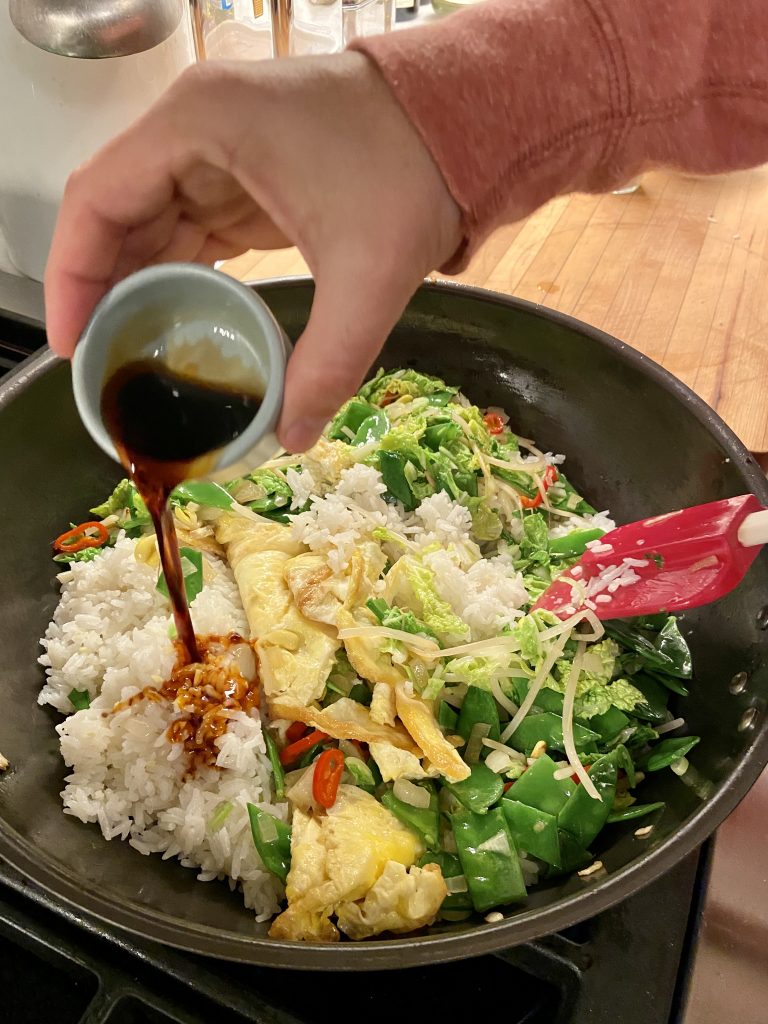
Does the world need another fried rice recipe? I didn’t think so until I made Kenji López-Alt’s Basic Vegetable Fried Rice from his new, somewhat astonishing book The Wok. The dish, which I consider to be an absolute cornerstone of a Weekday Vegetarian’s repertoire, has always been something I’ve kind of made up on the fly. Ginger here, soy sauce there, eggs before the vegetables…or, hmm, maybe after? BREAKING NEWS: If you use actual technique, your dinner — and by extension your day, your life — will be just a little bit better. And if you can rely on anyone for technique, it’s Kenji. The onetime Serious Eats columnist who now writes a column for the Times (and whose YouTube show, where he straps a GoPro to his forehead while making dinner, is absurdly addictive) made a name for himself with his precise, exhaustively scientific approach to cooking. (Though, he’s also trying to get away from this characterization, which I learned about from Helen Rosner’s Q&A with Kenji in the New Yorker.)
From his recipe, I learned four very important things about fried rice:
- Prep the Egg First I’ve always stirred the whisked egg into everything at the end; Kenji gives an option to cook it in the wok before anything else, which allows you to fold it in to the rice and vegetables at the end. This means larger, fresher pieces of egg, which I love.
- You Don’t Need a Lot of Sauce According to Kenji, this is the downfall of most fried rice dishes. As he asks: “Why go through all that trouble of crisping up the rice if you’re just going to drench it in too much sauce? Be judicious.”
- Gather Your Mise en Place Make sure everything is ready to go once you turn the heat on. Things cook fast and you want to be prepared.
- “The best rice is whatever you have left over to use up.” Kenji experimented with every kind and said even though he was expecting disasters from a few, “they all turned out decent.” He did outline his order of preference: Jasmine, medium-grain white rice, and sushi rice. The most important thing about whatever rice you use is to break it up with your fingers into individual grains. You don’t want “clumpiness” which means starch which translates to mush.
Here’s the recipe.
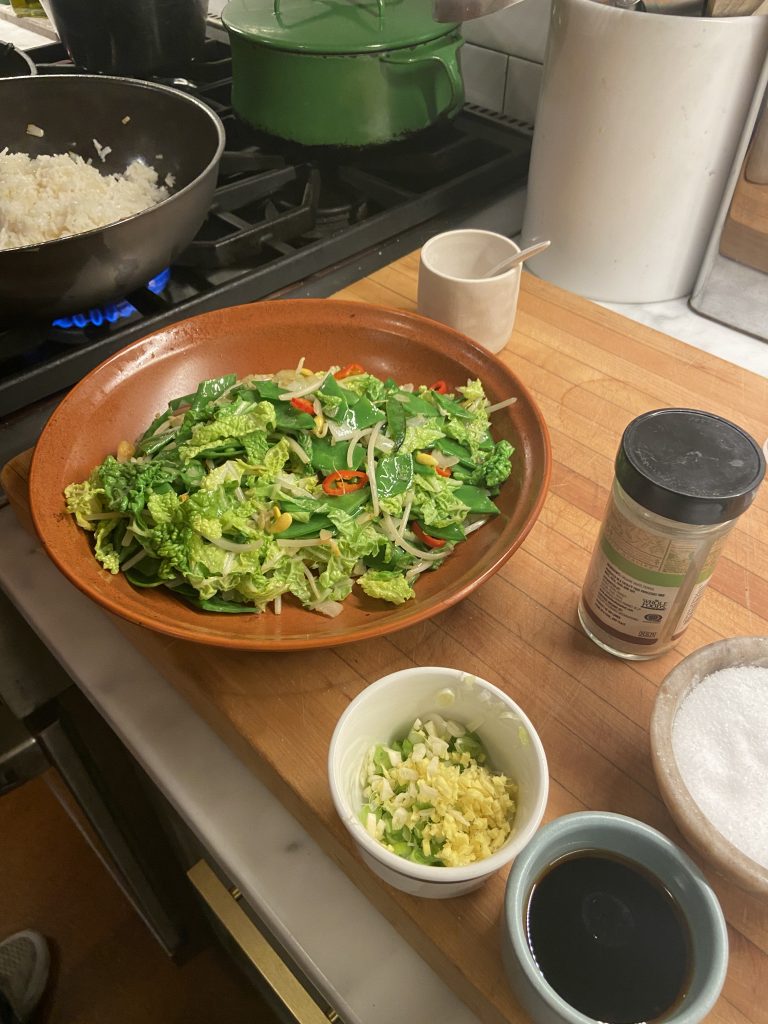
Basic Vegetable Fried Rice
This very simple fried rice is a blueprint for all of your future fried rice adventures. Feel free to omit or replace any of the vegetables. If using fresh rice, rinse the rice well before cooking, and once cooked, transfer it to a rimmed baking sheet set by a breezy window or under a fan for 1 hour before continuing with Step 2.
From The Wok: Recipes and Techniques, by J. Kenji López-Alt
Note From Jenny: For vegetables, we used about half a small head of Napa cabbage, a handful of bean sprouts, and 1 cup of (trimmed) snow peas. We also added about 2 teaspoons of minced fresh ginger.
2 cups cooked white rice*
1/4 cup vegetable, peanut, rice bran, or other neutral oil
2 large eggs, lightly beaten
1 small onion, finely chopped
1 medium carrot, peeled and cut into small dice
2 scallions, thinly sliced
2 medium garlic cloves, minced
1 teaspoon light soy sauce or shoyu
1 teaspoon roasted sesame oil
4 ounces frozen peas, thawed
kosher salt and freshly ground black pepper
If using day-old rice (see note), transfer to a medium bowl and break the rice up with your hands into individual grains.
Heat a wok over high heat until very lightly smoking. Add 3 tablespoon of the vegetable oil and swirl to coat. Reduce the heat to medium, pour the eggs into the center of the wok, and cook, swirling the wok, until the eggs are puffy and golden brown around the edges, about 30 seconds. Use a spatula to release the eggs from the bottom of the wok, carefully flip, cook for another 15 seconds, swirling, then transfer the eggs to a bowl and set aside.
Return the empty wok to high heat until lightly smoking. Add the onion and carrot and cook, stirring and tossing constantly, until lightly softened and fragrant, about 1 minute. Transfer to the bowl with the egg.
Return the empty wok to high heat until lightly smoking. Add the remaining tablespoon oil and swirl to coat. Add the rice and cook, stirring and tossing, until the rice is pale brown and toasted and has a lightly chewy texture, about 3 minutes (see note). Add the scallions and garlic and stir-fry until fragrant, about 30 seconds.
Return the vegetables and egg to the wok, using the spatula to break up the egg into small pieces as you toss everything together. Add the soy sauce, sesame oil, and peas.
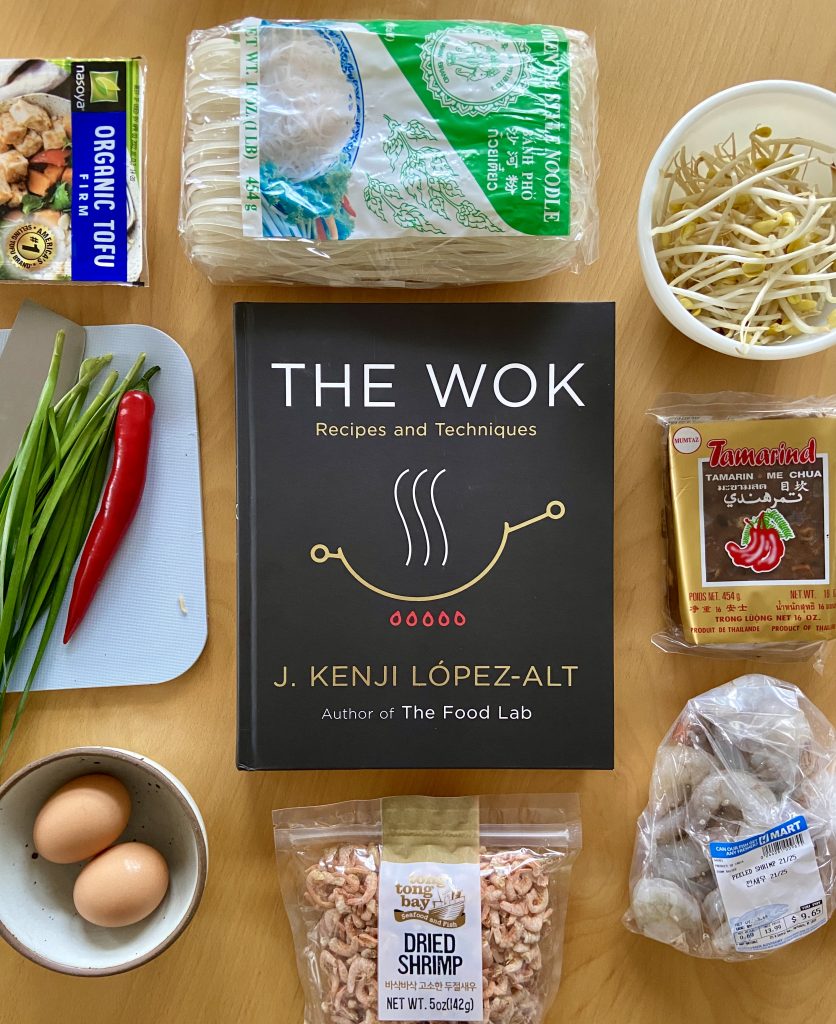
I feel like The Wok is going to be one of our “Saturday Night Cookbooks,” i.e. something we cook from when we don’t feel like going out to dinner, but we want our dinner to feel special and weekend-worthy. Two Saturdays ago we hit H Mart and loaded up on tamarind pulp, dried shrimp, pho and other groceries we never have on hand to execute his perfect pad Thai. Winner.
P.S. The wok in the photo is the Premium Cast Iron Wok (11.6 inches) from Nakano, and as always, Dinner: A Love Story readers get a 10% discount on all their products with code DINNER.

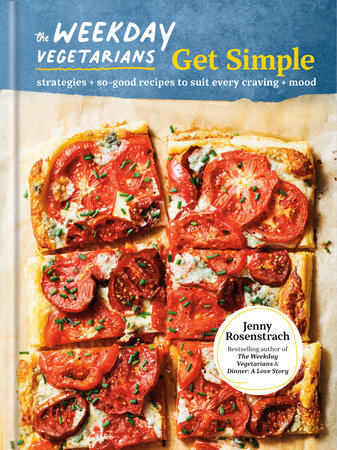
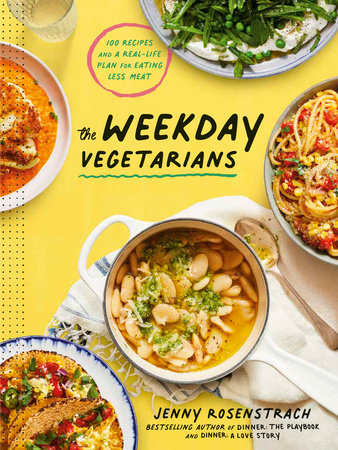
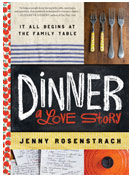
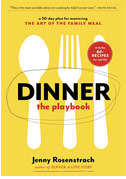


Which type of rice did you use? I think I see basmati, but I’m not sure. Thanks!
See #4 on what I learned — he said any rice will turn out “decently” but his favorites are jasmine, medium-grain white rice, and sushi rice
Hi! Would you share what brand of wok this is? I have an old steel wok that requires a lot of work to use, so tend to avoid it. This one looks more user friendly. Thank you
thanks for the comment Tara, I added the info to the post but the wok in the photo is the Premium Cast Iron Wok (11.6 inches) from Nakano, and as always, Dinner: A Love Story readers get a 10% discount on all their products with code DINNER.
As the child of parents who ran a Chinese restaurant, I agree with Kenji’s tips. At the restaurant, my uncles would cook the egg first before the rest of the veg, and then add it back in at the end. I find it prevents the egg from soggying up everything. Regarding sauce, for the fried rice on the menu, they would douse it with soy sauce, but when cooking it for ourselves, even in the restaurant kitchen, my mom would just use salt and maybe a little splash of soy sauce. I prefer it that way too, but my husband tends to drench it in sauce.